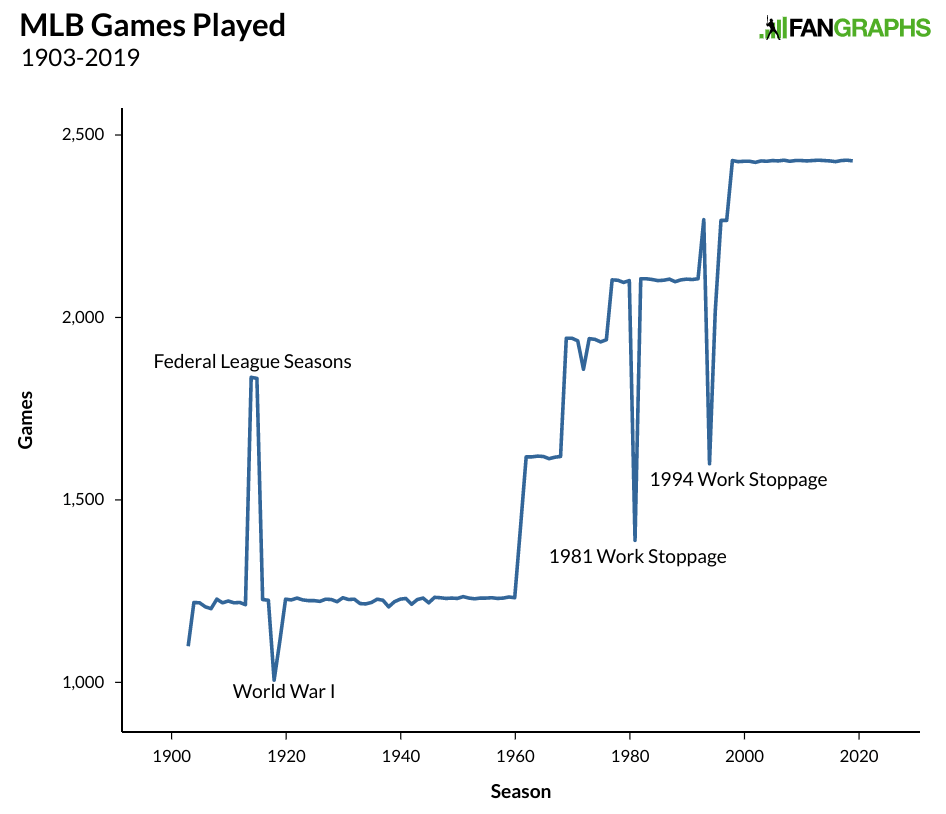COVID-19 Roundup: No MLB Draft?
This is the latest installment of a daily series in which the FanGraphs staff rounds up the latest developments regarding the COVID-19 virus’ effect on baseball.
In yesterday’s roundup of COVID-19 news, Dan Szymborksi covered MLB’s fund for ballpark employees and the lack of clarity surrounding pay for minor leaguers, among other topics. The last 24 hours, not unlike every 24 hour period over the last week or so, has brought with it more news, including potential changes to the MLB draft and a Reds employee testing positive for COVID-19.
No MLB Draft?
According to an Associated Press story from Ronald Blum, among the issues the players’ union and MLB are discussing is what to do with the MLB draft, currently scheduled for June. With college baseball shut down and many high school teams following suit, scouting players for the draft is almost impossible, and the June date could come and go before the MLB season has even started. While the feasibility of holding the draft is one issue, the teams might also be angling to reduce costs by eliminating both the draft and international signings, per Blum.
In 2019, MLB teams spent $316.5 million on draft bonuses and another $100 million on international signings, per JJ Cooper. In Ken Rosenthal’s piece on the subject, he mentions the possibility of a combined draft in 2021, though working out the eligibility details could prove difficult, as currently eligible high school seniors will theoretically be freshman in college a year from now, and not ordinarily eligible for the draft.
Read the rest of this entry »

